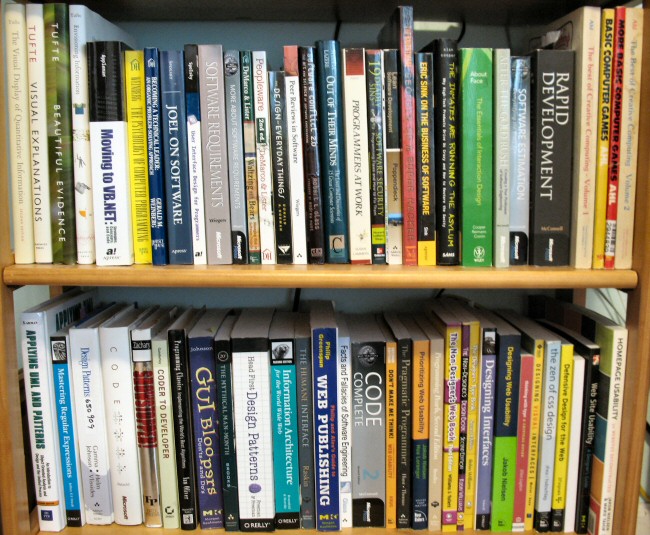As Python continues to dominate the programming landscape in 2024, staying up-to-date with the latest techniques and best practices is crucial. Whether you're a beginner, an experienced coder, or specializing in cutting-edge fields like AI and web development, there's a book to elevate your Python skills. Let's explore this year's must-read Python programming books.

1. "Python Distilled" by David Beazley
Why it stands out: Beazley's concise yet comprehensive approach makes this book a powerful resource for both novices and experienced programmers.
Key takeaways:
- Core Python language features
- Practical programming techniques
- Insights into Python's design philosophy
Ideal for: Developers seeking a deep understanding of Python's essentials without unnecessary fluff.
2. "Build RAG Applications with Django" by Simeon Emanuilov
Why it stands out: This book uniquely bridges the gap between web development and AI, focusing on Retrieval-Augmented Generation (RAG) applications.
Key takeaways:
- Mastering pgvector for similarity search
- Integrating OpenAI APIs and models
- Handling diverse content types (PDFs, videos)
- Implementing asynchronous tasks
- Deploying production-ready AI web applications
Ideal for: Django developers venturing into AI and machine learning engineers looking to create web-based AI applications.
3. "Build AI Applications with FastAPI" by Simeon Emanuilov
Why it stands out: This comprehensive guide marries AI development with modern web application practices using the high-performance FastAPI framework.
Key takeaways:
- FastAPI fundamentals for efficient API creation
- Integrating and managing LLMs with Ollama
- Database management using SQLAlchemy and Alembic
- Implementing JWT authentication
- Deployment strategies with Docker and bare metal servers
Ideal for: Python developers, data scientists, and ML engineers aiming to build scalable, production-ready AI applications.
4. "Robust Python" by Patrick Viafore
Why it stands out: Focuses on writing reliable, maintainable Python code that can withstand the test of time and scale.
Key takeaways:
- Design patterns for robust code
- Effective use of type hints
- Strategies for handling errors and edge cases
Ideal for: Intermediate to advanced Python developers striving for code reliability and maintainability.
5. "Architecture Patterns with Python" by Harry Percival and Bob Gregory
Why it stands out: Bridges the gap between software architecture and practical Python implementation.
Key takeaways:
- Domain-driven design in Python
- Event-driven architecture
- CQRS (Command Query Responsibility Segregation)
- Dependency injection techniques
Ideal for: Developers looking to design large-scale Python applications with solid architectural foundations.
6. "Python for Algorithmic Trading" by Yves Hilpisch
Why it stands out: Unique focus on using Python for financial market analysis and automated trading.
Key takeaways:
- Basics of algorithmic trading
- Working with financial data using Python
- Implementing trading strategies
- Backtesting and live trading
Ideal for: Finance professionals and Python developers interested in quantitative finance and algorithmic trading.
7. "Practices of the Python Pro" by Dane Hillard
Why it stands out: Focuses on professional software development practices specific to Python.
Key takeaways:
- Writing maintainable code
- Design patterns in Python
- Testing and debugging techniques
- Collaborative development workflows
Ideal for: Developers transitioning from hobbyist to professional Python programming.
8. "Tiny Python Projects" by Ken Youens-Clark
Why it stands out: Learn Python through 50 engaging, bite-sized projects.
Key takeaways:
- Fundamental Python concepts through practical application
- Problem-solving skills in Python
- Code organization and best practices
Ideal for: Beginners or those who prefer learning through hands-on projects.
9. "Machine Learning Engineering with Python" by Andrew P. McMahon
Why it stands out: Focuses on the engineering aspects of machine learning rather than just the algorithms.
Key takeaways:
- Building scalable ML systems
- Data pipeline development
- Model deployment and monitoring
- MLOps practices
Ideal for: Data scientists and ML engineers looking to productionize their models effectively.
10. "Python Concurrency with asyncio" by Matthew Fowler
Why it stands out: Deep dive into Python's asyncio library for concurrent programming.
Key takeaways:
- Understanding asynchronous programming
- Working with coroutines and event loops
- Handling concurrent network operations
- Performance optimization techniques
Ideal for: Developers working on high-performance, I/O-bound applications.
Conclusion
The Python ecosystem continues to evolve, and these books reflect the diverse applications of the language in 2024. From web development and AI integration, as showcased in Simeon Emanuilov's books on Django and FastAPI, to specialized fields like algorithmic trading and machine learning engineering, there's a wealth of knowledge to be gained.
Whether you're looking to enhance your web development skills with AI integration, dive into the intricacies of robust software design, or explore niche applications of Python, this list has something for every Python enthusiast. The key is to choose the books that align with your current skills and future aspirations in the vast world of Python programming.
Remember, the best way to learn is by doing. As you read these books, try to apply the concepts in your own projects. Happy coding and may your Python journey in 2024 be filled with growth and exciting discoveries!
